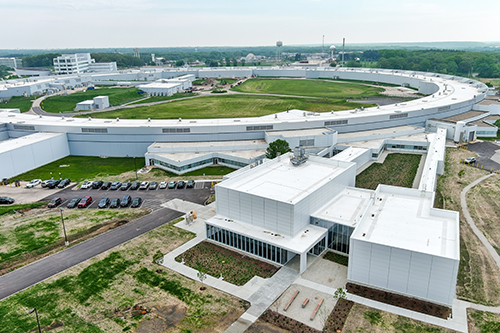|
Don’t look now, but we’re only about 200 days away from the start of the APS Upgrade installation period. In April 2023, the APS will go dark for a year as we remove the original electron storage ring and replace it with a brand new one. As you can imagine, it’s an exciting time for the team. The project is now 73 percent complete, with many components delivered and accepted. This great progress has been made in spite of ongoing challenges presented by the COVID-19 pandemic and subsequent supply chain disruptions. That is in large part due to the tenacity and resourcefulness of our team and our colleagues from across the lab, particularly Argonne Procurement. Everyone working on this project has consistently found innovative ways to help our partners during these uncertain times, all while working diligently and safely every single day. As preparations for the removal and installation period enter the home stretch, the project is undergoing multiple reviews over the course of late summer and fall to ensure that we’re ready. In August two different groups, both internally called and charged but composed of external colleagues, gave us their assessments and advice as we move forward. The first was a Shutdown Preparedness Review. This expert review committee examined 386 pages documenting the current status of the upgrade and our expectations for receiving and accepting components from vendors over the coming months. Despite all the challenges we have seen and addressed as a team, the committee found our plans and mitigations robust. Our plan remains that the APS user operations will pause on April 17, 2023. After one week of accelerator studies, during which the new APS Upgrade Injection Extraction Timing System (IETS) will be thoroughly tested to remove technical risks from the startup of the new storage ring, the 52-week removal and installation period will start on April 24, 2023. The second review was conducted by our Experimental Systems Advisory Committee (ESAC), meeting for the first time in slightly over two years. The ESAC’s charge was to look over our methodology for overcoming a cost contingency shortfall, brought on by the ongoing effects of COVID-19 and supply chain disruptions, as well as our initial commissioning plans once the installation is complete. Both of these are difficult and challenging topics, and this committee was well up to the task. The contingency plan they reviewed was the product of a rigorous methodology and many tough discussions. The short version of the path forward is this: while all infrastructure and potential functionality will be delivered within the project timeline, some capabilities of the upgraded APS will not be reached during initial operation. As an example, the construction of the experiment enclosure for 20-ID-D will continue on schedule, but delivery of the specific instrument meant for that enclosure will be delayed to a future date. The ESAC confirmed for us that our methodology was strong, and given the circumstances considered it the best way forward for the project. They also encouraged us to be ready to add some of these delayed items back into the current construction plan, should economic conditions change, which we will be more than happy to do. A full list of the new beamline capabilities that will be available initially and the capabilities that will come online later is available here. The second phase of the ESAC involved reviewing plans to commission the machine and the beamlines safely. Our goal is to welcome our whole user community back to the APS one year after the shutdown, as effectively as possible. Having our colleagues review our methodology and share their experiences can only help us do this better. We will share the details of the commissioning plan as it is more fully fleshed out in the coming months, once the input from all upcoming reviews is carefully considered and integrated in our final schedules. While there is no doubt that large science projects have faced challenges over the past two years, the results of these two reviews confirm that the APS Upgrade has charted a steady path toward the finish line. With the pivotal installation period approaching, we’re even more committed than ever to deliver a world-class facility for scientific discovery, and we’re fortunate to have extraordinary people to help us bring this new machine to life. Thank you again for your interest in and support of the APS. Sincerely, Jim Kerby APS Upgrade Project Director |

